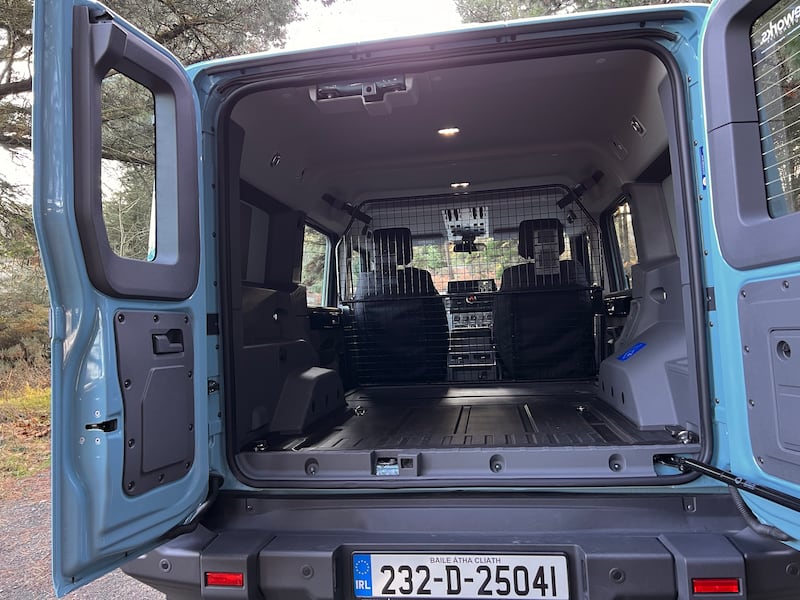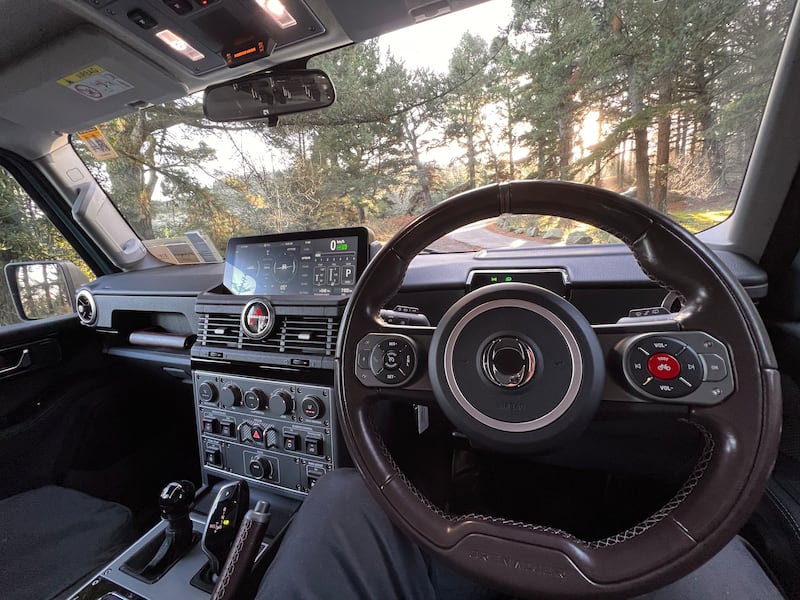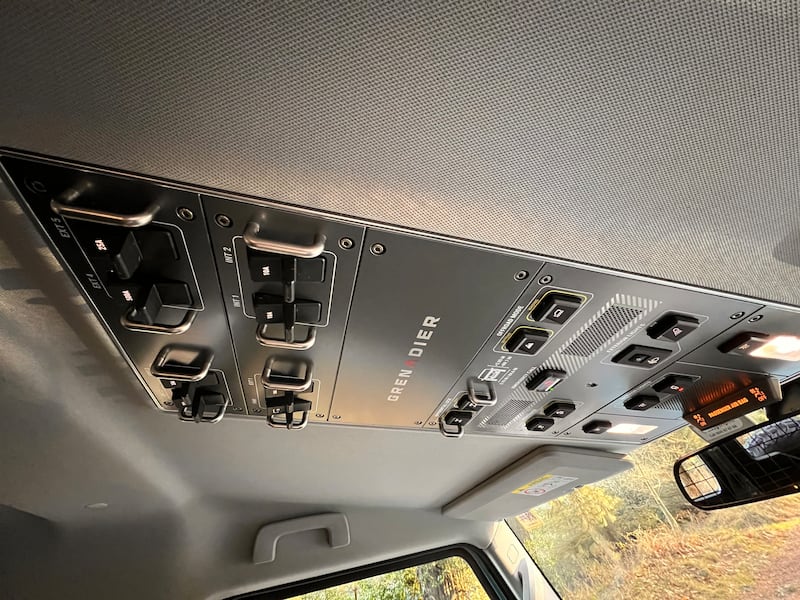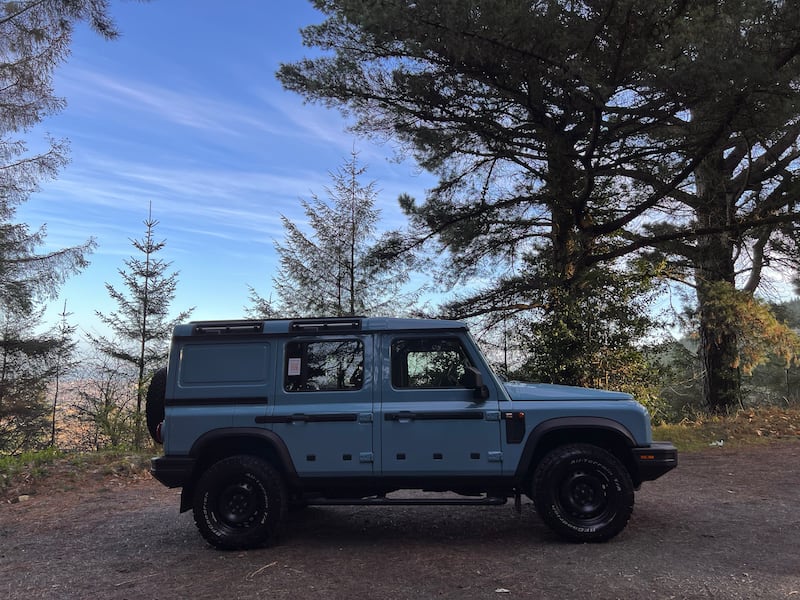Billionaires usually get what billionaires want, and Jim Ratcliffe wanted, more than almost anything, to keep the old Land Rover Defender in production. So much so that when the original Defender finally reached the end of its production life, Ratcliffe tried to buy the rights to make the car and keep it in production.
Not very surprisingly, Land Rover rebuffed this move, but being a billionaire means that you can find other ways of getting what you want, and so Ratcliffe decided to make his own car company, named Ineos – just like the vast chemical company from which he made his billions.
The project hit controversy almost immediately. Ratcliffe, a vocal proponent of Brexit, reversed initial plans to build this new 4x4 – named Grenadier after the pub in which the idea was cooked up – in the UK and instead bought the old Smart factory in Hambach, France. That, on top of employing Austria-based Magna Steyr to engineer the car in the first place. And getting BMW to supply engines, and Germany’s ZF to send over some automatic gearboxes. Indeed, for a supposedly Brexit-y vehicle, the Grenadier is actually festooned with European flags. There is a little German flag on the front wheelarch as a salute to BMW’s input, and the option of French tricolours to mark its production site.
But we are getting bogged down, and that is avowedly not what the Grenadier is supposed to do. With Land Rover taking its new (and current) Defender upmarket and giving it a far more refined sheen, Ineos wanted to create a new vehicle, with new technology, but very much in the unstoppable-off-road format of the old Defender. Unsurprisingly, the two cars bear visual kinship, although there is as much of the old Mercedes G-Wagen in the Grenadier’s chunky, square shape.
‘There are times I regret having kids. They’re adults, and it’s now that I’m regretting it, which seems strange’
Cillian Murphy: ‘You had the Kerry babies, the moving statues, no abortion, no divorce. It was like the dark ages’
The Dublin couple who built their house in a week
John Creedon: ‘I was always being sent away, not because they didn’t love me, but because they couldn’t cope’

It is a car which hits you immediately with its sheer practicality. The front and rear bumpers are made in multiple sections, so if you bash one bit off a tree or a farm gate, it is not an expensive job to get it replaced. The doors have attachment rails for anything from extra fuel cans to a fold-out table, and can carry a weight of 60kg thanks to reinforced hinges.
There are pre-installed points for an air intake snorkel and a rear-mounted ladder. The rear doors, split 70:30, open up completely to allow unfettered access to the load space. Ineos wanted to make the Grenadier a tool as much as a car, and in that it has succeeded. In our Utility Wagon two-seat commercial test car, there was more than 2,000-litres of loadspace, and the ability to carry almost 800kg of load.
Inside, there is a digital screen, but just the one – a combined instrument panel and infotainment screen in the centre of the dashboard. It’s a shame that there is no driver’s display behind the wheel, but the main screen is fairly simple to use and can show a myriad of information, from steering angle to tyre temperature.
Better still are the physical switches. The Grenadier’s dashboard, and the roof above the front seats, are covered with big, tactile switches that look as if they were taken from an Apollo command module. They are all spectacularly easy to find and use, even with gloves on, and the clunk-click of the overhead roof-mounted switches in particular feels like a form of ASMR therapy when you are on a long drive.


And, you can do a long drive. With smooth, if sometimes noisy, power from a 249hp BMW 3.0-litre straight-six diesel engine (a petrol version is also available, and Ineos is dabbling with hydrogen power too) the Grenadier is immediately far more refined and usable than an old Land Rover Defender. Its driving position, in spite of being offset to the right, is still vastly more comfortable than any pre-2020 Defender, and even though the massive BF Goodrich off-road tyres of our test car thrummed and hummed their way along the motorway, long hauls were painless (aside from the 13.0-litres per 100km fuel economy).
The steering is the hardest part to get your head around. There is no self-centring, so any lock you put on, you also have to wind off. It is not so bad most of the time, and the Grenadier is a tidy enough car to drive with a relatively well-controlled ride quality, but quick exits from 90-degree junctions will result in a flurry of arms and elbows.
Of course, the point is that the steering is easier to manage off-road, which is the Grenadier’s natural home. We visited Orangeworks, Ireland’s only Grenadier dealer, at its home nestled within 110-acres of woodlands on the Carton House estate. No shiny showroom for the Grenadier, and no tyre-kicking passersby. If you’re really interested, Orangeworks will send you the directions to find their location (good luck doing so without) and will make sure you’ve been thoroughly appraised of the Grenadier’s off-road prowess before you head home.

With enough ride height to traverse a hefty mountain range, three locking differentials, and high-and-low ratio gears, the Grenadier made mincemeat of the off-road course at Orangeworks HQ. We were hardly likely to be let loose on tracks with which the car could not cope, but with the temperature heading for -5 degrees, and a treacherous mixture of ice and occasional meltwater on the course, it is still hugely impressive how the Grenadier coped with the conditions. It is far more an off-road than on-road car, and most assuredly not an SUV in the modern, softly-softly mould.
You can buy it as a two or five-seat commercial, a five-seat passenger model, or in the coming weeks as a “Quartermaster” pickup. Should you, though?
That is a difficult question to answer. In replacing the old Land Rover Defender, Ineos has hit its target pretty well, and the Grenadier feels and drives like an old Defender, but with refinement and technology of which that old car could never have dreamed. However, Land Rover’s new Defender, while perhaps not quite so off-road capable as the Grenadier, is a far more comfortable and refined machine on tarmac. Equally, Toyota has a new Land Cruiser incoming fast, which may give the Grenadier an uncomfortable time. Although, the Grenadier is pretty well unique in the Irish market right now for offering a commercial model with full seats for five.
It’s not cheap, with VAT-inclusive prices starting at €88,499, but as a utilitarian, useful, usable tool it is rather impressive. It is not for you if you just want something that looks good on the school run, or for carrying extended family around. The Grenadier is a hard-working tool and needs to be owned, driven, and used as such.
Lowdown: Ineos Grenadier Utility Wagon
Power: 3.0-litre straight-six diesel putting out 249hp and 550Nm of torque through an eight-speed automatic gearbox powering all four wheels
0-100km/h: 9.8 seconds
Emissions (motor tax): 286g/km (€333 commercial tax)
Fuel consumption: 10.9l/100km (WLTP)
Price: €88,499 (inc. VAT) as tested (Grenadier starts at €88,499)
Our rating: 3/5
Verdict: Hugely impressive in the right environment, but you have to really need its capabilities



